Table of Contents
(2) Application of mixed light with different color temperature
i. Mixed light using different color films
This high and low color temperature mixed lighting method is suitable for some young people, fashionable, lively, and energetic people.
Precautions:
First, the red light level and the blue light level should be balanced and coordinated with each other when arranging the light level. Too much red light will make the picture warmer, and too much blue light will make the picture colder.
Second, the soft light of the main light must not only highlight the main character but not be too strong, otherwise the cold and warm light behind it will not be able to set off.
Third, it is reasonable to choose and use according to the personality, characteristics, and character of the main character.
Main light of normal CCT + auxiliary light of different CCT
The main light is normal color temperature (flash) + auxiliary light (color light of different color temperature)
The use of this mixed light can make the picture produce a dreamy color feeling. In specific operations, two flashes of normal color temperature and a reflector are arranged in front of and on the side of the character. The dark part of the character uses color lights of different color temperatures as auxiliary light to change the color of part of the character’s skin color to produce the effect of ambient light.
As shown in the figure below, the blue light source is used as the auxiliary light to highlight the outline of the character. The blue auxiliary light can also illuminate the background so that the character and the background color are integrated and unified. The picture effects give people the feeling of dream, illusion, and movement. This lighting method can be applied to fashion, dreamy and other styles of shooting.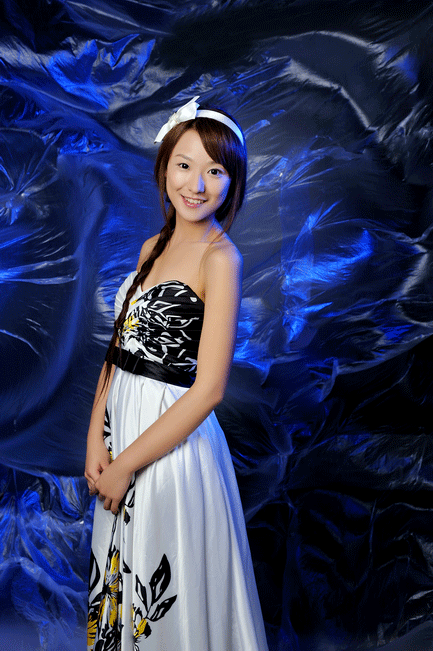
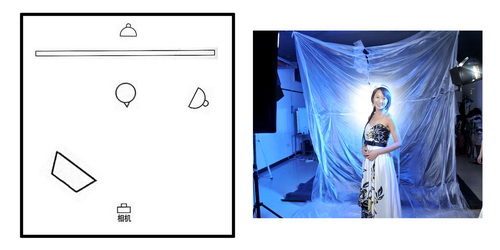
Precautions:
First, when arranging the light, pay attention to the reasonable control of the auxiliary color light intensity. Too strong will affect the subject’s skin tone. Too weak will have no effect. Comparing the following figure, it can be seen that if the blue light source is too strong, the skin color of the character will become gray or even abnormal. This would not meet the model’s normal aesthetic requirements.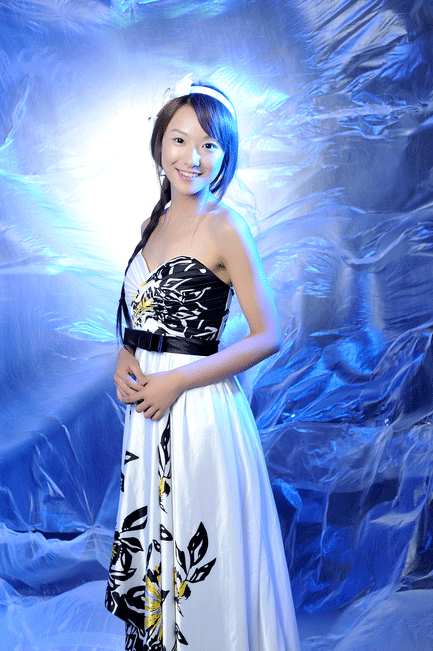
Second, in the choice of white balance, we generally choose a white balance that is consistent with the color temperature of the main light to ensure that the main skin color of the person is restored to normal.
Normal CCT main light + low & high CCT auxiliary light
Main light is normal color temperature (flash) + auxiliary light low color temperature (red light) + auxiliary light high color temperature (blue light)
Use a flash with a normal color temperature as the main light, and a red light source and a blue light source as an auxiliary light to form a warm and cold change on the figure. Both colored lights hit the model’s face and body while illuminating the background. The picture is more varied, and the overall feeling is fashionable and jumping.
As shown in the figure below, the red light source is the side backlight, which outlines the body line of the person being photographed, and the dark part of the person uses a blue light source. On the front is a soft box with reflector as the main light source for the main body of the character to ensure that part of the character’s skin tone is restored to normal.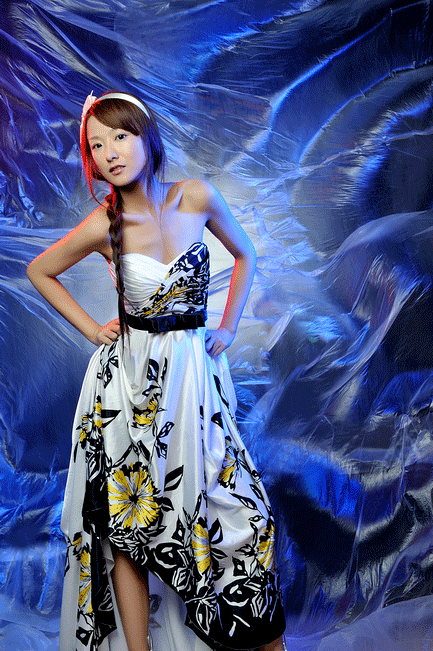
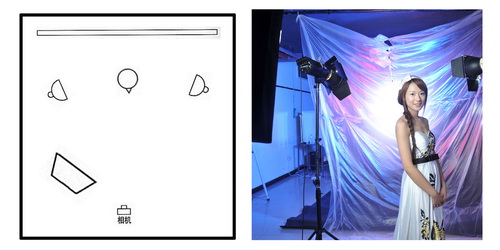
Precautions:
First, photographers often use this method of mixing light to shoot dynamic and fashionable shooting styles. People who are suitable for shooting can express lively and fashionable feelings as much as possible.
Second, pay attention to the strength and weakness control of the cold and warm when shooting, any color temperature of the light source is too strong will destroy the overall feeling of the picture.
Third, don’t ignore the frontal flash with normal color temperature, otherwise the color light will completely change the skin color of the person. Then the color change is too weird not only can’t produce the aesthetic effect, but also difficult for the model to accept.
ii. Mixed use of lamps with different color temperatures
When shooting with mixed light, unused lamps will produce different color temperature effects, such as warmer tones for quartz lamps and cooler tones for fluorescent lamps. The combination of different lamps will produce different picture effects.
The mixing of continuous light source and flash is a very common method of mixing light. The color temperature of the continuous light source is low, and the light source of the flash is high. Combining the two, the color changes in the shots are very subtle.
Under normal circumstances, we will use a weaker continuous light source as the main light and a brighter flash as an auxiliary. In this way, it will be easier for us to control the light ratio and depth of field. The following figure shows the effect of using continuous light as the main light and softbox flash as the auxiliary light. The flash used as auxiliary light can directly shine on the subject according to the actual situation, or indirectly shine on the subject through the reflection of the wall or reflector. The latter method produces a softer picture with more detailed and richer levels. But the clarity and sharpness are slightly weaker than directly hitting the subject.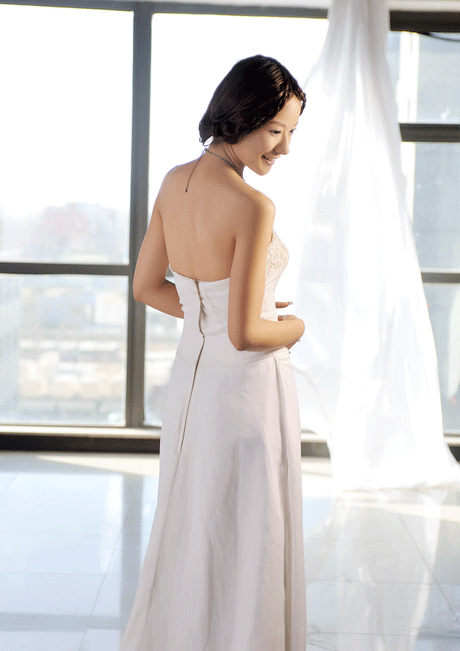
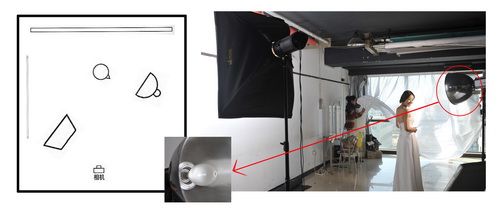

(3) The use of mixed light from different light sources
From the perspective of physics, an object that can emit electromagnetic waves in a certain wavelength range (including invisible light such as visible light and ultraviolet light, infrared light, and X-ray) usually refers to the one that can emit light by itself, which is light source as we call it, or a luminous body. For example, the sun, stars, lamps, and burning matter are all light sources.
In portrait photography, our most common light source refers to artificial light: flash, tungsten lamp, etc. Outdoor natural light: sunlight, moonlight, etc. There are many forms of mixed light from different light sources. Here we mainly analyze the mixed light of two representative light sources used indoors.
i. Natural light source + continuous light source
We can take full advantage of the sunlight coming in through the windows and doors for shooting, and then assist artificial light to fill the light. Such as: natural light source + continuous light source, the light quality of continuous light is relatively soft. This is conducive to the embodiment of the level and color of the dark part of the character. And it will blend with the characters and the atmosphere of the scene.
As shown in the figure below, the main character uses outdoor sunlight as the main light. And photographer use the quartz lamp as the auxiliary light. The picture is more integrated and natural. Highlight the environmental atmosphere of the picture, and have a certain expression of space and time.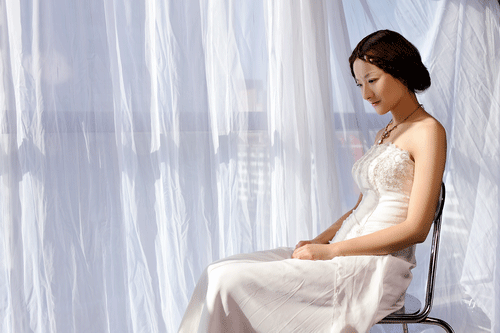
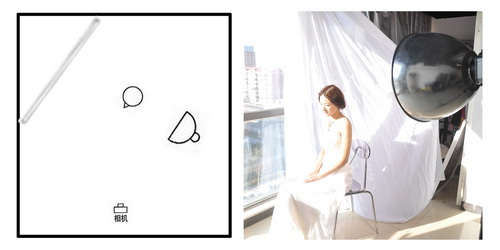
This mixed-light shooting method is more suitable for expressing aesthetic, elegant, and noble subjects. And it reflects the inner temperament of the main character. Not suitable for character styles that express fashion and dynamics.
Precautions:
First, pay attention to the reasonable control of the distance between the quartz lamp and the person in the actual shooting. If the distance is too far, it will not play the role of supplementary light. Quartz lamp and natural light source should cooperate with each other, otherwise, the overall contrast is likely to be too large. So that the picture does not have a sense of hierarchy.
Second, if the outdoor sunlight is too strong, we can use translucent curtains to block or soften it. This can reduce the intensity of sunlight and make the light softer.
Third, because the natural light and continuous light of the windows are weak. It is best to use a tripod when shooting, so as to avoid slow speed or large aperture. And the camera shakes the picture during shooting.
ii. Natural light source + flash
Use natural light with flash. The flash is brighter and harder, so we generally choose to use a soft box. This can not only play the role of supplementing light to the character as a whole, but also play the effect of emphasizing the subject’s texture.
As shown in the figure below, the photographer used thesunlight as the backlight and ambient light by the window. And used the soft flash to illuminate the face of the person. The use of flash in such an environment will make the light of the picture feel natural and soft when the subject is exposed to normal conditions. This mixed lighting method can improve the clarity and sharpness of the picture, and make the picture more layered.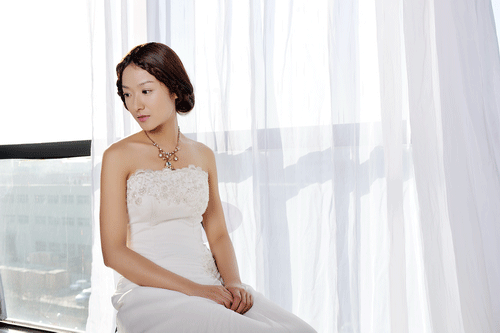

Precautions:
First, pay attention to the intensity setting of the flash and the distance between the flash and the subject in the actual shooting. Otherwise it is easy to cause the picture to overexpose too much and reflect the natural light effect that does not appear on the scene.
Second, pay attention to the angle of natural light outside the window. Too much direct natural light can easily cause people’s eyes to not open, making the subject’s facial expressions unnatural and inconsistent with the overall picture.
Pay attention to the time period when using natural light and artificial light in combination. Generally we will choose a few hours before and after noon, because this is the best time. At this time, the sunlight is the strongest time of the day. And the brightness is high and the brightness is easier to control. Too early or too late, the light will gradually weaken, not enough lighting intensity, no effect.
